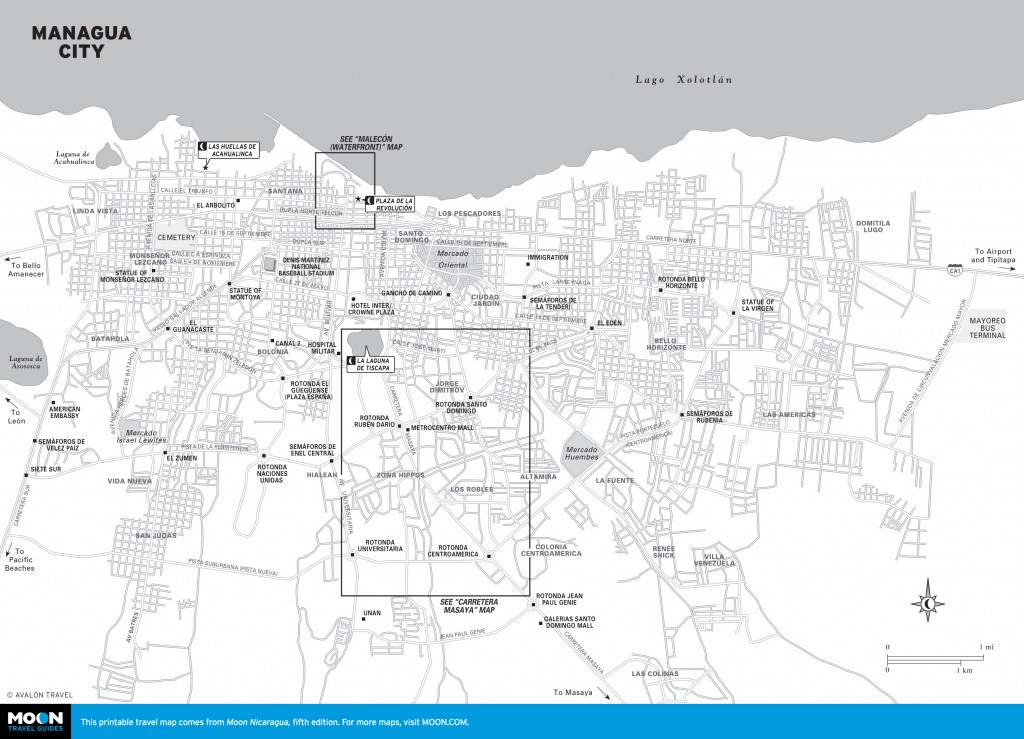Historical trivia buffs, take note! A lot of Managua’s most historically salient points are close to invisible, in stark contrast to the role they played in the lead-up to the 1979 revolution. None of these destinations has gotten the granite monument they deserve, but their importance is no less diminished, even as life goes on around them. If you have a rainy afternoon in Managua some day, hop in a taxi, and revisit history on this driving tour (about 30 minutes). Start at your hotel and go first to Plaza de la Revolución.

Managua City
One block south of the Guerrillero sin Nombre, the southwest corner with a lone wooden telephone pole marks the site of journalist Pedro Joaquin Chamorro’s assassination as he drove to his office on January 10, 1978. One block south of the Guerrillero sin Nombre, the southwest corner with a lone wooden telephone pole marks the site of journalist Pedro Joaquin Chamorro’s assassination as he drove to his office on January 10, 1978. Although it was never officially determined who ordered the hit, Chamorro’s death helped spark the revolution. Look for a concrete monument directly behind the telephone pole.Turn south on to Avenida Bolívar. You’ll pass some government buildings and basketball courts before coming to the National Arboretum (8 a.m.–5 p.m. Mon.–Sat., $0.50) on your left, home to more than 180 species of trees found in Nicaragua. It is practically unvisited except by local school groups, but is especially attractive in March, when the fragrant sacuanjoche (Nicaragua’s national flower) blooms brightly; the scarlet flowers of the malinche tree blossom from May through August. The trees are planted atop the remnants of Somoza’s Hormiguero (Anthill), a military base belonging to the National Guard and destroyed in 1972 by the earthquake. Popular legend has it that this was the site where, on February 21, 1934, General Sandino was ambushed and assassinated after meeting with President Sacasa at his home on the Tiscapa Crater.
Turn left at Plaza Inter and head in the direction of the El Dorado neighborhood. The monument to Bill Stewart is one block west and two blocks south of the Semáforo El Dorado. Bill Stewart was a U.S. journalist for ABC in the 1970s. While reporting on the early days of the Sandinista insurrection, he was brutally attacked and killed by members of Somoza’s National Guard. Stewart’s cameraman filmed and published the whole thing, forcing the U.S. government to stop turning a blind eye to the excesses of Nicaragua’s dictator.
A few blocks south in the same neighborhood, the Iglesia de los Angeles is a living monument to the revolution, painted on all sides in bright murals that tell the story of Nicaragua. Beautiful on its own, it can be better appreciated with a guide: Contact Solentiname Tours (tel. 505/2270-9981, [email protected]) for an expert who will lead you through the story.
Finally, and in the opposite direction, just west of the petroleum refinery on the road leading west out of town is La Cuesta del Plomo (accessible from ruta bus 183), the ravine where Somoza was allegedly fond of making folks “disappear.” Families whose loved ones didn’t come home after a few days would go to this hillside to search for their bodies.
Excerpted from the Fifth Edition of Moon Nicaragua.